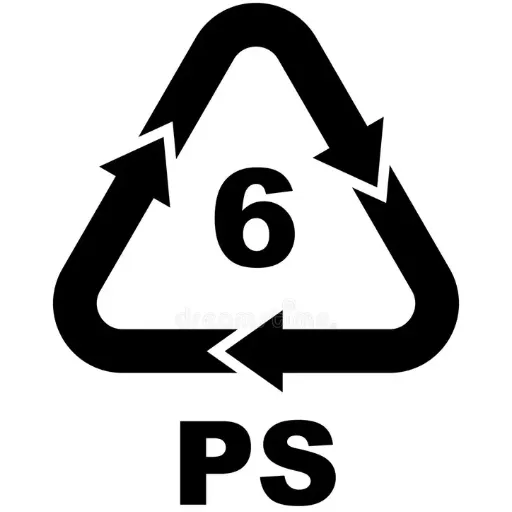One of the most significant problems in preserving the life and durability of high-density polyethylene (HDPE) products is UV damage. Sunlight can weaken HDPE, causing it to degrade, fade, or even crack over time. Whether it’s for outdoor furniture pieces, storage units, or industrial products, HDPE must be shielded from damaging UV radiation to preserve its structural integrity and function. *This guide focuses on ways to make HDPE UV resistant, empowering you with effective techniques that protect your plastic asset and allow you to maintain its appearance and functionality over time.* Continue reading for expert advice and tips to help you effectively combat UV damage.
What is the Effect of UV on HDPE?
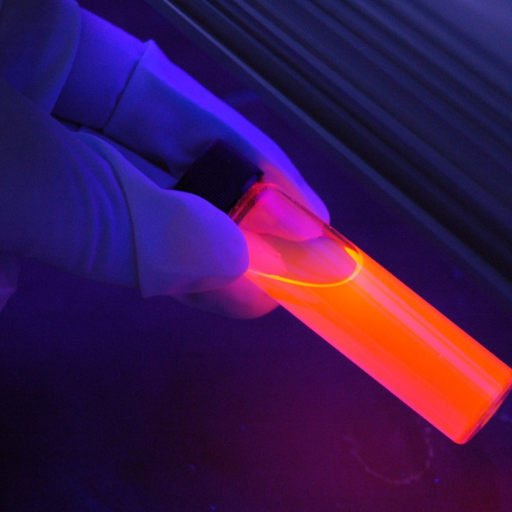
Over time, exposure to ultraviolet (UV) light can cause deterioration to HDPE. Left unchecked, UV radiation weakens the polymer bonds in HDPE, making it more susceptible to becoming brittle, losing strength, and cracking or discoloring. Such breakdown decreases the structural integrity of the material in relation to its condition, posing a greater threat of damage, especially when used outdoors with UV rays constantly being present. Maintaining resistance to UV is essential in protecting the overall quality and cosmetic look of HDPE.
Understanding UV Degradation in HDPE
The ultraviolet (UV) degradation of HDPE depends on numerous factors, such as the amount of UV radiation received, UV exposure time, and the surroundings. Studies show that HDPE without any protective measures can lose its tensile strength by nearly fifty percent in a matter of months to a few years, depending on the weather conditions. Photodegradation results from the emission of UV light due to the chemical structure of HDPE. Photodegradation weakens molecular bonds, which in turn results in fractures, erosion of surfaces, and a chalky look.
Enhancing UV Resistance in HDPE
HDPE is usually fortified with UV stabilizers and carbon black to protect it from the adverse effects of UV rays. Research indicates that incorporating 2-3% carbon black by weight increases the period HDPE can be kept outdoors by several years since carbon black mitigates damaging UV radiation and transforms it into heat. Other organics classified as UV stabilizers, such as HALS, also mitigate damage caused by UV radiation by neutralizing free radicals and slowing degradation. Field testing has proved that modified HDPE can sustain more than ten years of outdoor exposure without significant damage.”
Practical Applications of UV-Resistant HDPE
Different industries like outdoor piping, geomembranes, and agricultural films make use of UV-resistant HDPE . Performance data from long-term testing reveals that treated HDPE products retain roughly 80-90% of their structural integrity after years of exposure to harsh environments. These qualities make UV-resistant HDPE economical and sustainable for applications needing prolonged outdoor endurance.
How UV Rays Affect the Physical Properties of HDPE
If high-density polyethylene (HDPE) is not modified with stabilizers or protective additives, ultraviolet (UV) rays can have a lasting effect on its physical properties. Unlike treated HDPE, untreated ones go through a photo-oxidation process which weakens their polymer chains and leaves them more vulnerable two “mechanical damage”. As a result of this photo-oxidation process, untreated HDPE will suffer from discoloration, degradation of mechanical strength, and increased brittleness.
It has been estimated that untreated HDPE exposed to continuous UV radiation will lose around 50% of its tensile strength for a period of several years. Given the different conditions of the environment, this information sheds light on the need to apply UV-resistant additives when fighting degradation. For example, carbon black is one of the most common UV stabilizers, and using it in the form of pigment protects the polymer as it absorbs the UV rays that would penetrate the surface of the polymer. Studies conducted on UV-inhibited HDPE products have proven that these products can maintain more than 80% of their tensile properties after several years under direct exposure to the sun, enabling the products to be used in demanding outdoor conditions.
In addition, these studies suggest that reinforced HDPE materials with HALS possess harder surfaces compared to unmodified ones, increasing their service lifetime. Alongside these results, one can add tested claim in regard to having their enduring performance when facing severely harsh conditions where UV exposure is considered as a primary factor.
Common Signs of UV Damage on HDPE
The structural strength and performance of HDPE are impacted negatively by ultraviolet (UV) ray exposure in a few distinct ways. One of the most identifying markers is surface chalking, the formation of a “dust-like” surface due to the decomposition of polymer chains and the surface. Discoloration similarly altered areas fade whitish whilst yellowing over time as affected areas grow older. These changes come with visual alterations along with a dip in mechanical properties like tensile strength and increased brittleness, making the material vulnerable to cracking when stressed.
Micro-cracking is a crucial sign, as well as the most common, that augments larger cracks with continued exposure to UV radiation. Studies suggest severely weathered HDPE samples lose up to fifty percent material strength due to prolonged UV exposure, impacted by external factors such as the environment, temperature, and UV index. The usage of UV stabilizers alongside shielding HDPE materials is greatly encouraged to red tackle these indicators, especially designed for outdoors or high ultraviolet ray areas. Complete inspections are valuable too, as they provide the means to detect subtle issues before they evolve into major problems.
How Can UV Resistance Be Improved in HDPE?

The addition of UV stabilizers during the manufacturing process aids in increasing the UV resistance of HDPE. These stabilizers either absorb or block harmful UV rays which would have caused the material to degrade. In addition, the use of carbon black pigments in HDPE protective surface coatings or HDPE itself can increase the durability of the material against UV exposure. Proper maintenance, along with storage away from sunlight when not in use, can also prolong the lifespan of HDPE used in outdoor settings.
Using UV Stabilizers in HDPE
The use of UV stabilizers in HDPE plastic not only improves its performance but also increases its lifespan when exposed to outdoor conditions. This is due to the fact that UV radiation is known to shatter the polymer chains within HDPE. Without proper restorative processes, this would lead to fading, loss of strength, and material failure. It is believed that UV stabilizers enable treated HDPE to sustain structural integrity for a decade or more while consistently being exposed to the sun, depending on the type and quality of stabilizer used.
Examples of common additives include Hindered Amine Light Stabilizers (HALS) as well as UV absorbers. The HALS stabilizers help prolong lifespan by scavenging free radicals that aid in chain degradation during UV exposure, while UV absorbers capture and dissipate radiation. Other studies strongly suggest that HDPE fitted with carbon black, an aggressive pigment, can offer close to 100% protection from damage due to ultraviolet rays, making it excellent for long-term outdoor usage.
Moreover, improvements in the agricultural film, piping, and outdoor furniture manufacturing HDPE applications now permit custom methods of stabilizer systems. Test data indicates that the treated HDPE samples retain more than 90 percent of their original tensile strength after extended UV exposure in comparison to untreated samples which undergoes significant degradation within several months. This emphasizes the importance of ultraviolet UV stabilizers in prolonging the useful life of HDPE products to lower costs in the long term.
The Role of Carbon Black in Enhancing UV Protection
The addition of carbon black significantly increases UV protection by absorbing damaging ultraviolet rays, converting them to harmless heat. It also prevents UV-induced degradation when added to HDPE, paired with maintaining its mechanical properties, extending the lifespan of the material.
Choosing UV-Resistant Additives for HDPE
Choosing the appropriate UV-resistant additives for HDPE is critical for its longevity, especially for outdoor applications with constant sunlight exposure. Commonly used HALS (Hindered Amine Light Stabilizers), along with UV absorbers and antioxidants, have different contributions to UV resistance. For instance, HALS works well in stabilizing polymer chains, preventing breakdown from exposure to UV radiation over time. Likewise, UV absorbers capture damaging radiation and release it as heat to prevent harm to the material.
Research shows that adding 2-3% carbon black along with HALS to HDPE products increases the UV resistance up to 10 times compared to unmodified HDPE. This combination greatly reduces surface cracking and retains tensile strength in products subjected to harsh sunlight. Others focus on the development of more efficient nanoparticle-based UV stabilizers, which need smaller quantities of the additive. Such developments help manufacturers prolong the lifespan of HDPE products without significantly raising production costs.
Meeting the requirements and carefully assessing the environment surrounding the product aids in selection of UV-resistant additives to achieve optimal balance between performance, sustainability, and cost.
Are There HDPE Pipe Options with Built-in UV Protection?
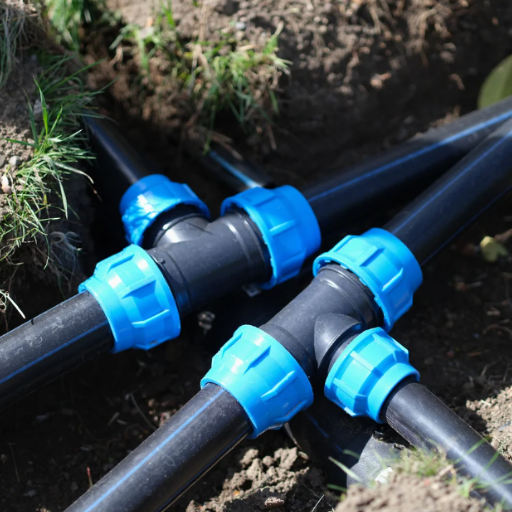
Indeed, certain types of HDPE pipes are offered with built-in UV protection. The pipes are made with UV resisting additives like carbon black which are infused into the product during the making process. This guarantees that the pipes will perform well and remain effective over time, even with long term exposure to sunlight. For outdoor applications, selecting HDPE pipes which have inbuilt UV protection is an economical and dependable option.
Exploring Outdoor Applications for HDPE Pipes
The commendable outdoor usage of HDPE or High-Density Polyethylene pipes is a reliable solution thanks to its versatility in use and unmatched durability. Recent researches advocate that when used outdoors, HDPE pipes have a lifespan of over fifty years even with difficult weather conditions. Irrigation and drainage systems, along with the water supply networks situated in the open landscape horticulture, are equally supported by HDPE pipes due to their UV radiation and chemical stressors resiliency.
Among many remarkable characteristics, resistance to corrosive materials is HDPE’s most distinguishing advantage. Their lightweight nature lowers the cost of labor and equipment while also making transport and installation easier. Research indicates that these fusion-welded joints enable HDPE pipes to conserve water better than surgically precise measured cuts advocate, resulting in agricultural and municipal projects worldwide greatly favoring their employment. Furthermore, HDPE pipes automatically provide a solution to is six times lighter than traditional steel or concrete material.
Besides the previously mentioned features, they also enhance performance in eco-friendliness considering a large percentage of HDPE products are recyclable along with being made from eco-sustainable materials.
Comparison of UV-Resistant HDPE Pipe Options
UV-resistant HDPE pipes are designed to endure harmful sunlight without major structural damage. The addition of carbon black, a compound that absorbs damaging rays, ensures the pipes’ structural integrity by preventing critical damage. This feature is particularly useful in areas with intense sunlight or high UV radiation as it provides unwavering durability.
Durability and Longevity
Research suggests that the UV-resistant HDPE pipes will last outdoors for up to 50 years—with retained mechanical features. They have remarkable resistance to harsh cracking, splitting, and other environmental stressors. The addition of UV stabilizers increases the ability to withstand these negative environmental impacts, ensuring that the pipes can be reliably used for long periods in exposed outdoor settings.
Performance in High-Temperature Environments
Perhaps the most unique quality of UV-resistant HDPE pipes is their high-temperature performance. These pipes tolerate extreme fluctuations from -40°F to 140°F, making them ideal for both hot and dry climates, as well as areas with changeable weather.
Economic and Environmental Benefits
Compared to older materials like PVC or metal, the UV-resistant HDPE pipes are very economical over their lifecycle. Reduced maintenance along with lowered replacement costs leads to substantial savings on monumental scale projects. Further, the lightweight nature of these pipes also lowers the cost of transportation. The energy consumed during the installation, helps in reducing construction waste. All of these factors combined aid in making these construction processes more sustainable.
Applications of UV-Resistant HDPE Pipes
They are mostly used for irrigation systems, water supply, and movement of industrial fluids. Their resistance to UV radiation makes them suitable for prolonged outdoor UV radiation exposure, such as in agricultural sprinkler systems and above ground water transport. Their ability to endure severe environmental conditions without deterioration ensures their RV reliability in critical infrastructure works.
Comparison Summary Table
|
Feature |
UV-Resistant HDPE Pipes |
Non-UV Resistant Pipes |
|---|---|---|
|
UV Resistance |
Excellent (Carbon black) |
Poor |
|
Lifespan (outdoor use) |
Up to 50 years |
Significantly reduced |
|
Thermal Stability |
-40°F to 140°F |
Limited |
|
Maintenance Costs |
Low |
High (due to degradation) |
|
Applications |
Outdoor, long-term use |
Primarily indoor use |
What is the Process for Making Polyethylene UV Resistant?
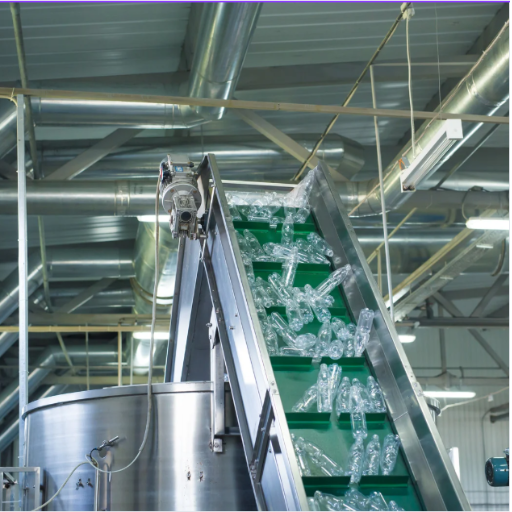
Carbon black or other UV stabilizers are added to polyethylene during the production process to make it UV resistant. The most effective and commonly used additive is carbon black since it absorbs and dissipates UV radiation, preventing damage to the polymer. To a lesser extent, stabilizers such as hindered amine light stabilizers (HALS) that neutralize the damage caused by UV rays can also be added. Adding these stabilizers assists in uniform dispersion with the polymer matrix, ensuring that every region of the material is well protected, which improves its strength and lifespan for outdoor use.
Incorporating UV Absorbers During Manufacturing
Ultraviolet (UV) absorbers are important in protecting polyethylene materials from ultraviolet radiation-induced damage. These compounds help withstand vigorous UV radiation by dissipating it as non-destructive heat, thus preventing the necessary molecular bonds within the polymer from being shattered. Polyethylene stabilizers containing UV-absorbing benzotriazoles or hindered amine light stabilizers (HALS) are frequently used, usually blended together to increase the efficiency of protection offered.
It has been reported that the addition of UV absorbers to polyethylene significantly improves resistance to photodegradation. Specific research has proven that incorporated UV stabilizers between concentrations of 0.3% and 0.5% by weight sharply improve material stability without mechanical disfiguration. Take, for outdoor applications as agricultural films; these products, in combination with other additives and polymeric materials, can be employed and manufactured for up to 50% longer service life, thus replacing them less often and reducing replacement costs dramatically. In addition to that, these biostable polymer additives protect the polymers no matter where the environment is set, which makes them versatile for industrial and commercial products.
Careful attention to the details of the manufacturing processes guarantees uniform mixing of UV absorbers in the polymer matrix and thus the greatest attainable efficiency. Incorporating those advanced additives makes it possible to tailor the materials for high-performance, sustained outdoor use.
Testing for UV Resistance in Polyethylene
Evaluating the UV resistance of polyethylene requires precision and accuracy, therefore several sophisticated tests are conducted. One of the most common methods is weathering testing which uses xenon arc or UV fluorescent lamps to simulate material exposing to the sun’s rays for a very long period of time. This allows manufacturers to anticipate how products made from these materials would behave for many years in the open environment.
Key performance indicators consist of the external changes of property deformation which is mostly mechanical such as tensile strength, elongation at break, and impact resistance of polyethylene. For instance, research indicates that untreated polyethylene can experience up to 70% loss in tensile strength due to long UV exposure, which highlights the need for UV stabilizers during production.
One other crucial method is colorimetric analysis; A polyethylene material can only be classified as strong if there is slight change in color after thousands of hours of exposure under controlled environment and no visible changes in strength even after being tested vigorously during several processes for a long period of time.
Also, TGA (thermogravimetric analysis) and FTIR (Fourier-transform infrared spectroscopy) techniques are used to evaluate chemical degradation. These techniques help determine the cleavage of polymer chains and the oxidation products formed as byproducts, indicating loss of resistance to ultraviolet light.
Polymers undergo sharp changes. During oxidative weathering of polymers, including chain scission due to oxidation and crosslinking, both of which can lead to loss of light stability.
From these tests, it is possible to improve these tests so that the proposed formulations achieve the goal of increasing the polyethylene’s life and its properties under extreme environmental conditions.
How Does Exposure to Sunlight Affect Plastic Materials?
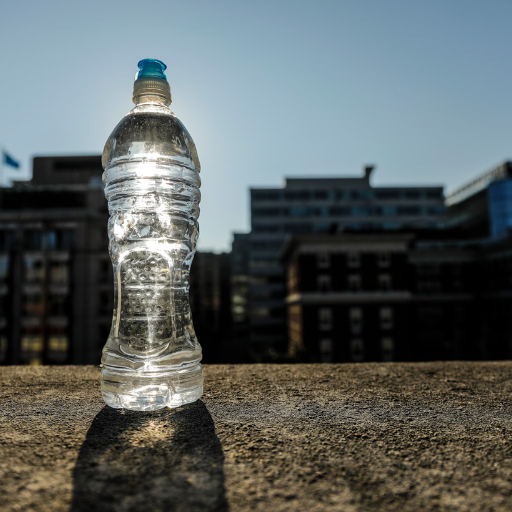
Plastic materials undergo changes due to exposure to sunlight in a process called photodegradation. The sun’s ultraviolet (UV) radiation breaks down a plastic material’s chemical bonds, which results in the material losing its intrinsic properties. Such changes include discoloration, loss of strength, crystallinity, and surface fractures. In the long run, the degradation increases the material’s loss in durability and functionality. Adding stabilizers, or UV-resistant additives, can prevent some of these changes and help extend the service life of plastic materials used outdoors.
Understanding UV Radiation and Plastic Degradation
Ultraviolet (UV) rays are an invisible part of sunlight that damages plastic products used outdoors. Research has proven that outdoor plastic items undergo chemical transformations due to prolonged exposure to the sun, forming free radicals. Free radicals initiate polymer chain reaction, also known as depolymerization, which progressively weakens the material’s mechanical properties and surface. Notably, polyethylene and polypropylene, other materials used in outdoor applications, undergo severe degeneration of tensile strength and elastic modulus after UV exposure.
Research confirmed that UV plasticizers radiation (280–315 nm) is more detrimental to plastics because it is capable of destroying molecular bonds. To counter this, UV stabilizers such as Hindered Amine Light Stabilizers (HALS) and UV absorbers were found to be effective. Studies claimed that the addition of UV stabilizers may increase polymer lifespan by 50 Percent or more,e depending on UV exposure intensity and duration.
Additionally, laboratory tests frequently recreate these scenarios with the help of weathering devices that mimic the impact of UV light. They aid in forecasting the long-term behavior of a material, giving insights to the manufacturers on how certain compositions deal with surrounding stress factors. Through the application of advanced protective coatings or additives, the durability of plastics can be greatly improved by companies, even for high-exposure environments.
Prolonging the Lifespan of Plastics with UV Protection
In order to enhance the lifetime of plastics with UV protection, I give priority to advanced UV stabilizers and protective coatings. These protective measures curtail the deterioration resulting from prolonged ultraviolet (UV) exposure while preserving both the functioning and quality of plastics over time, even in difficult environments.
Solutions for Other Outdoor Uses of Plastics
When it comes to ensuring the performance and durability of outdoor applications, choosing plastics with superior UV resistance is vital. Materials like polycarbonate, acrylic, and UV-stabilized polyethylene are commonly used for their durability from prolonged exposure to the sun. To illustrate, UV-stabilized high-density polyethylene (HDPE) is popular in the construction of outdoor furniture and structures because it withstands cracking and fading from sunlight for many years.
Also, the use of protective coatings, such as nano-ceramic and UV-blocking films, enhances the longevity of outdoor HDPE plastic products significantly. As reports suggest, the addition of UV protection significantly extends the lifecycle of plastics by about 50% when they are placed under constant sunlight. This is extremely useful for applications like agricultural films, outdoor signs, and vehicle parts, where durability and aesthetics need to endure difficult conditions.
In a bid to enhance outdoor applicability, many plastic manufacturers also have thermal stabilizers which work in conjunction with UV protection by relieving heat stress. These approaches combine to ensure that plastics retain their structural integrity, the performance remains reliable, and the vibrant colors do not fade even when subjected to numerous environmental conditions.
Reference Sources
- Application of Antioxidants and UV Absorbers in HDPE1:
- Key Findings: UV absorbers significantly enhance HDPE’s UV resistance compared to antioxidants. After 600 hours of UV exposure, HDPE with UV absorbers retained superior mechanical properties, while samples with antioxidants degraded after 200 hours.
- Methodology: Samples were prepared with antioxidants and UV absorbers, then subjected to accelerated UV aging. Mechanical properties, crystallinity, and thermal stability were analyzed using FTIR, DSC, and TGA.
- Effect of UV Exposure on Bimodal HDPE for Floating Solar Applications4:
- Key Findings: Bimodal HDPE maintained mechanical integrity after 1152 hours of UV exposure, with minor reductions in tensile strength and elongation at break. Hardness increased due to crystallinity changes.
- Methodology: HDPE samples were exposed to accelerated UV conditions, and mechanical properties like tensile strength, elongation, and hardness were evaluated.
- HDPE Functionalized by UV Irradiation3:
- Key Findings: UV irradiation introduced oxygen-containing groups (e.g., carbonyl, hydroxyl) into HDPE, increasing crystallinity but reducing impact strength and melting temperature. Functionalized HDPE improved compatibility in HDPE/PC blends.
- Methodology: HDPE was irradiated at varying intensities, and changes in chemical structure, crystallinity, and mechanical properties were analyzed.
- Photochemical Stability of HDPE/Ag Composites5:
- Key Findings: Silver nanoparticles (AgNPs) enhanced HDPE’s UV stability by inhibiting photo-oxidation. Higher AgNP concentrations provided better protection, reducing molecular mobility and chain scission.
- Methodology: HDPE composites with varying AgNP concentrations were exposed to UV light. FTIR, tensile tests, and crystallinity measurements were used to assess stability.
- Top HDPE Plastic Pellets Suppliers in China
Frequently Asked Questions (FAQs)
Q: Why does HDPE need to be UV resistant?
A: HDPE needs to be UV resistant because when it is exposed to sunlight, the sun’s UV radiation can degrade the material over time, compromising its integrity and functionality. Making HDPE resistant to UV light helps prolong its lifespan and maintain its performance.
Q: How does UV light affect HDPE?
A: UV light affects HDPE by breaking down the polymer chains, causing the material to become brittle and lose its mechanical properties. This degradation can result in the failure of plastic products, especially if they are continuously exposed to sunlight.
Q: What additives can make HDPE resistant to UV?
A: Additives such as carbon black and hindered amine light stabilizers (HALS) can be used in the production of HDPE to absorb light or reflect it, providing good resistance to ultraviolet rays and making the material resistant to UV light.
Q: Can HDPE be used for outdoor applications?
A: Yes, HDPE can be used for outdoor applications if it is treated with anti-UV additives. This treatment enhances its resistance to UV radiation, ensuring that HDPE pipe and fittings can withstand direct sunlight exposure without significant degradation.
Q: How can I provide additional protection to HDPE products exposed to sunlight?
A: To provide additional protection to HDPE products exposed to sunlight, you can use coatings or paints designed to reflect UV rays, incorporate protective covers, or ensure that they are shaded whenever possible to minimize direct exposure.
Q: What is the role of catalyst residues in HDPE’s UV resistance?
A: Catalyst residues and other impurities in HDPE can affect its resistance to ultraviolet light. These residues can accelerate degradation when the material is exposed to UV radiation, so it’s crucial to manage their presence during production.
Q: How does the color of HDPE affect its UV resistance?
A: The color of HDPE significantly affects its UV resistance. Black HDPE is known for its superior resistance to UV light because the carbon black pigment used in its production absorbs UV radiation, preventing it from degrading the polymer structure.

